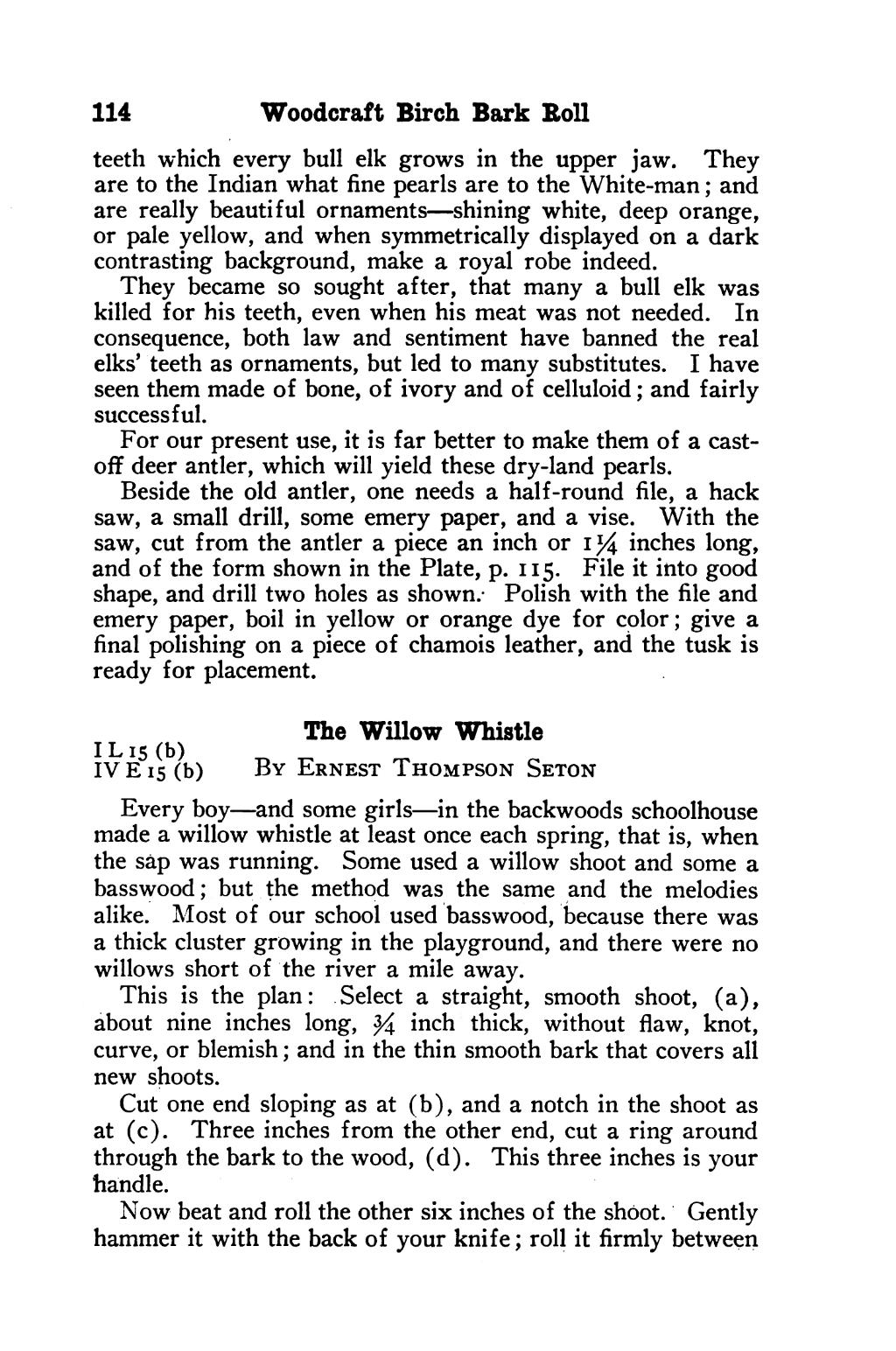114 Woodcraft Birch Bark Roll teeth which every bull elk grows in the upper jaw. They are to the Indian what fine pearls are to the White-man ; and are really beautiful ornaments—shining white, deep orange, or pale yellow, and when symmetrically displayed on a dark contrasting background, make a royal robe indeed. They became so sought after, that many a bull elk was killed for his teeth, even when his meat was not needed. In consequence, both law and sentiment have banned the real elks’ teeth as ornaments, but led to many substitutes. I have seen them made of bone, of ivory and of celluloid ; and fairly successful. For our present use, it is far better to make them of a cast- off deer antler, which will yield these dry-land pearls. Beside the old antler, one needs a half-round file, a hack saw, a small drill, some emery paper, and a vise. With the saw, cut from the antler a piece an inch or 1% inches long, and of the form shown in the Plate, p. 115. File it into good shape, and drill two holes as shown. Polish with the file and emery paper, boil in yellow or orange dye for color; give a final polishing on a piece of chamois leather, and the tusk is ready for placement. IL 1s (b) The Willow Whistle I IV E's (b) By Ernest THOMPSON SETON Every boy—and some girls—in the backwoods schoolhouse made a willow whistle at least once each spring, that is, when the sap was running. Some used a willow shoot and some a basswood ; but the method was the same and the melodies alike. Most of our school used basswood, because there was a thick cluster growing in the playground, and there were no willows short of the river a mile away. This is the plan: Select a straight, smooth shoot, (a), about nine inches long, 34 inch thick, without flaw, knot, curve, or blemish ; and in the thin smooth bark that covers all new shoots. Cut one end sloping as at (b), and a notch in the shoot as at (c). Three inches from the other end, cut a ring around through the bark to the wood, (d). This three inches is your handle. Now beat and roll the other six inches of the shoot.’ Gently hammer it with the back of your knife; roll it firmly between
Stránka:roll 1931.djvu/130
Z thewoodcraft.org
Tato stránka nebyla zkontrolována
